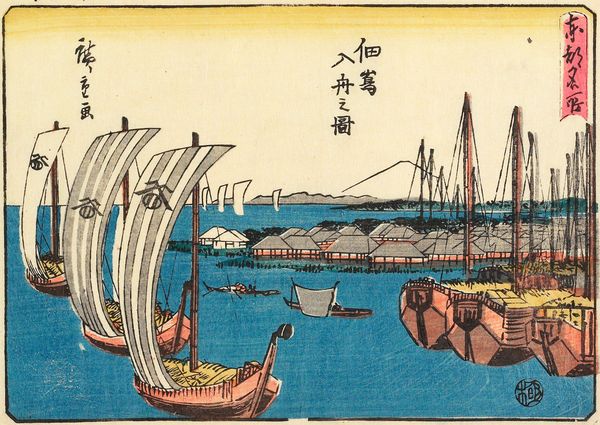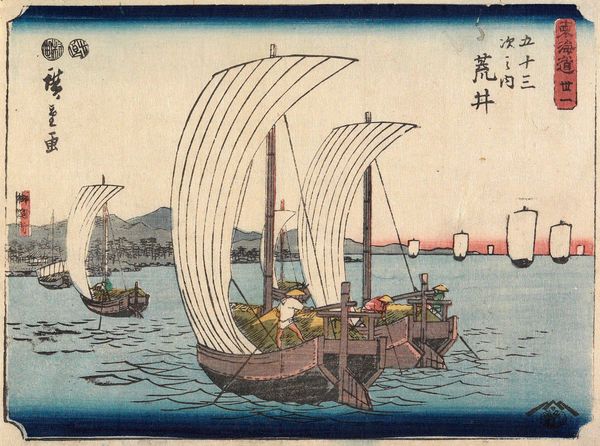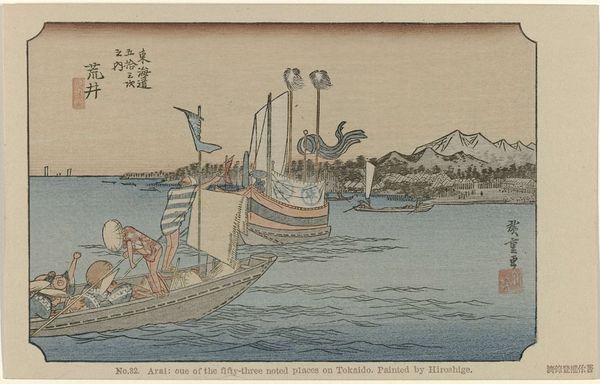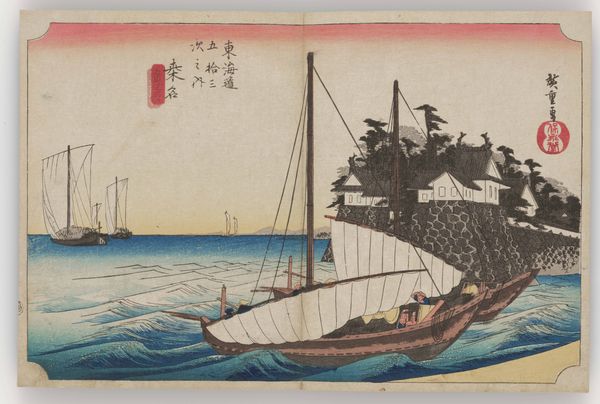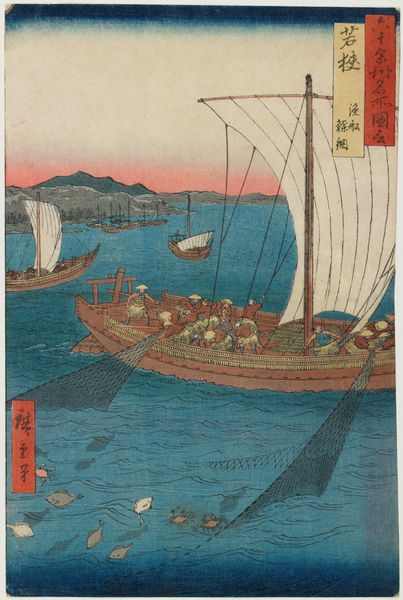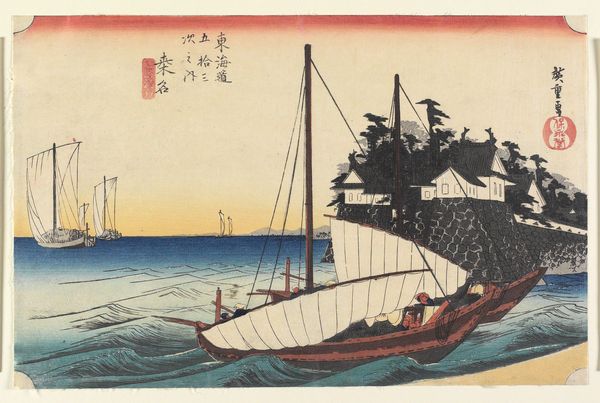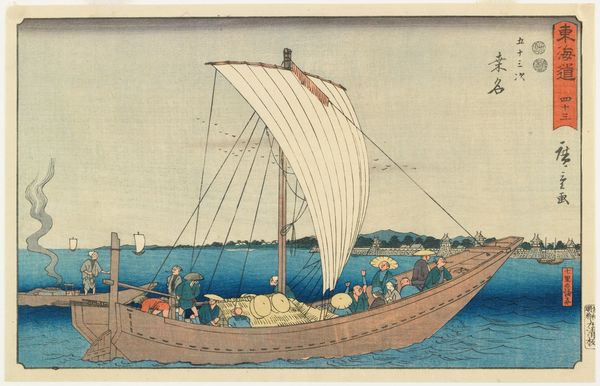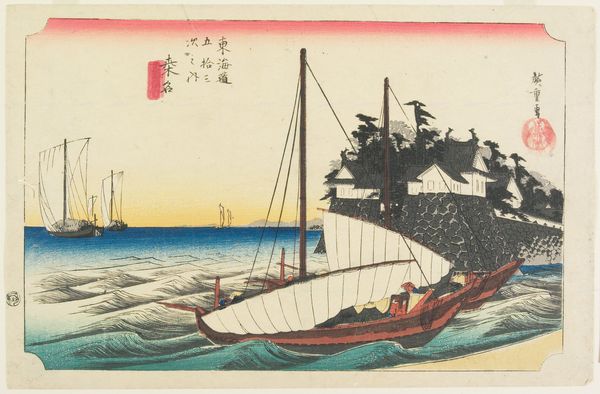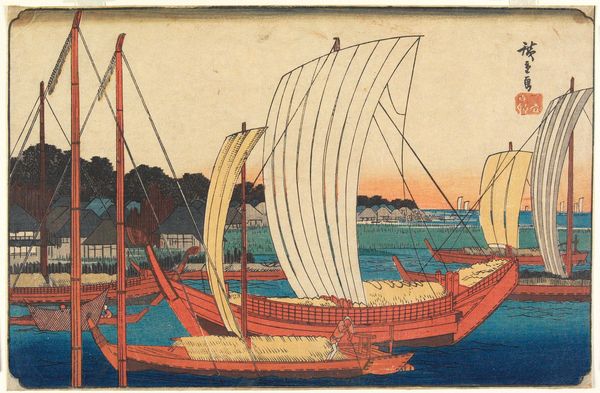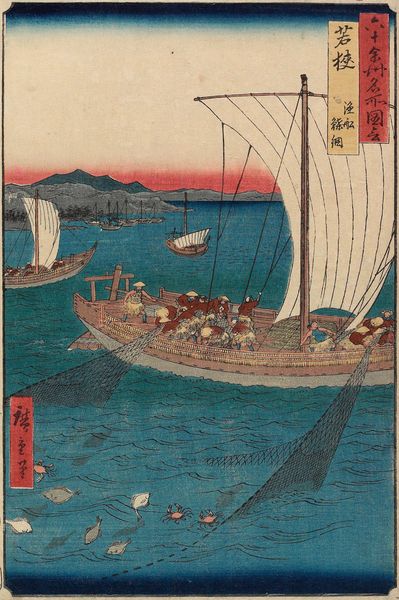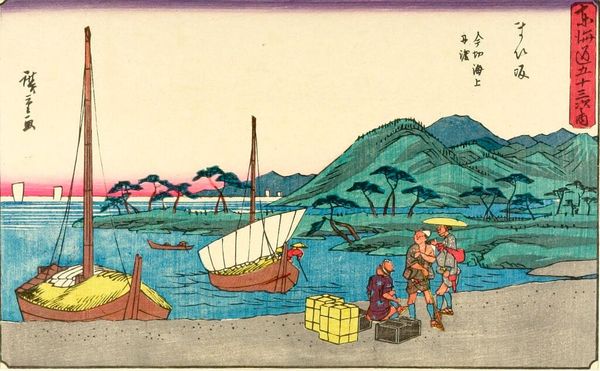
print, ink, woodblock-print
# print
#
landscape
#
ukiyo-e
#
japan
#
ink
#
woodblock-print
#
cityscape
Dimensions: 7 5/8 x 12 3/8 in. (19.4 x 31.4 cm) (image)
Copyright: Public Domain
Curator: This woodblock print, "Sailing Boats at Arai," by Utagawa Hiroshige, likely created between 1841 and 1842, is part of the "Fifty-three Stations of the Tōkaidō" series and resides here at the Minneapolis Institute of Art. Editor: It's so tranquil, yet busy. The repetition of the boats moving across the water gives a rhythm to the image. Even though the color palette is somewhat muted, it still makes the image pop. Curator: That tension between stillness and movement is characteristic of ukiyo-e prints. The composition is carefully constructed to draw the viewer's eye from the foreground boats towards the more distant shoreline. Editor: Right, and thinking about that shoreline, it speaks to the broader societal shifts during that era. It’s not just a pretty scene; it represents a crucial transportation route. Were these ships also acting as vehicles for commerce and trade along this route? Curator: Absolutely. The Tōkaidō road, and by extension maritime traffic, were essential for the transport of goods and people connecting Edo, modern-day Tokyo, to Kyoto, the imperial capital. Hiroshige captured these scenes, catering to a growing merchant class interested in travel and landscape imagery. It represented connection and cultural exchange. Editor: When I consider the working people in those boats, I wonder, how accessible would those travel opportunities and cultural exchanges have been to laborers? We're viewing this idyllic scene, but whose labor enabled its existence? I wonder what it meant to document what amounted to almost tourist traps in that era. Curator: That's an important point. Ukiyo-e prints were consumed by a wide audience, yes, but not uniformly across all social strata. However, what these images did was cultivate a sense of shared identity, a national consciousness through depictions of landscape. What is today seen as scenic also acted as state propaganda. Editor: Precisely. It gives me pause, this lovely artwork, to remember that such works can sometimes sanitize lived reality. That makes one extra cautious about consuming such a work passively. Curator: Agreed. When assessing such prints as “Sailing Boats at Arai” through the lens of their social impact, one may appreciate their historical importance for better grasping Japan's visual and political evolution. Editor: Exactly, a visual artifact, with complexities. Curator: Indeed.
Comments
No comments
Be the first to comment and join the conversation on the ultimate creative platform.
